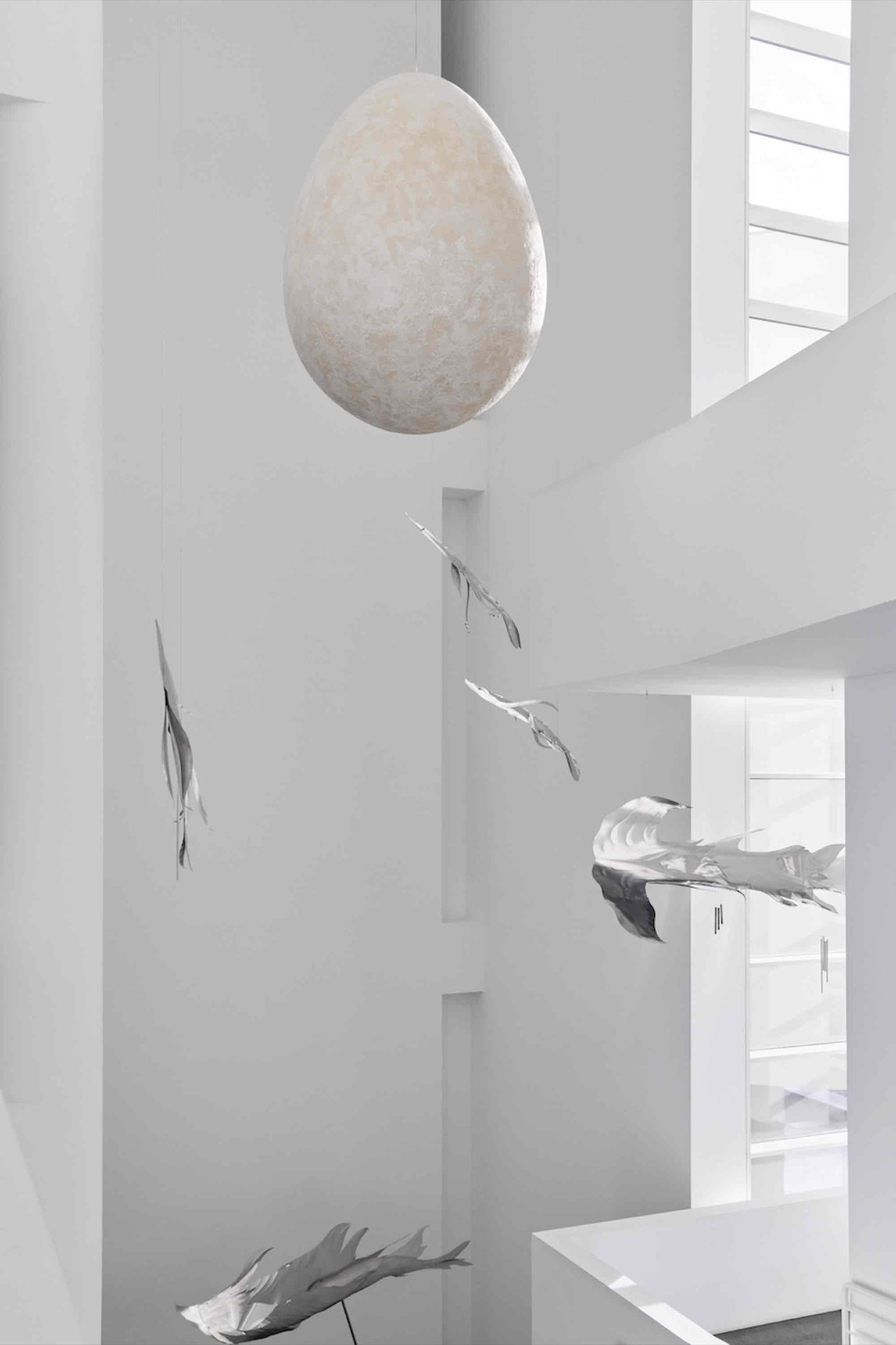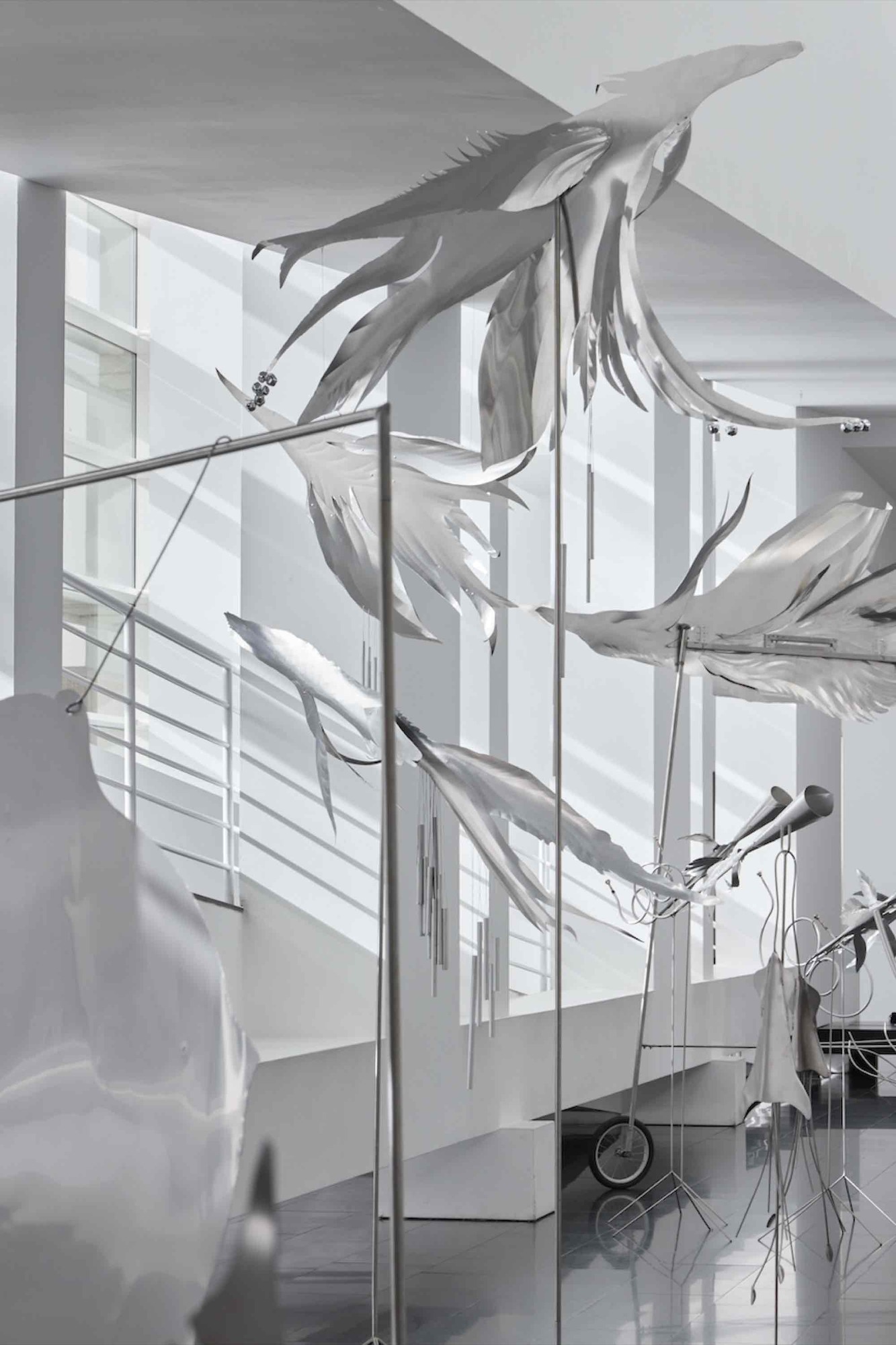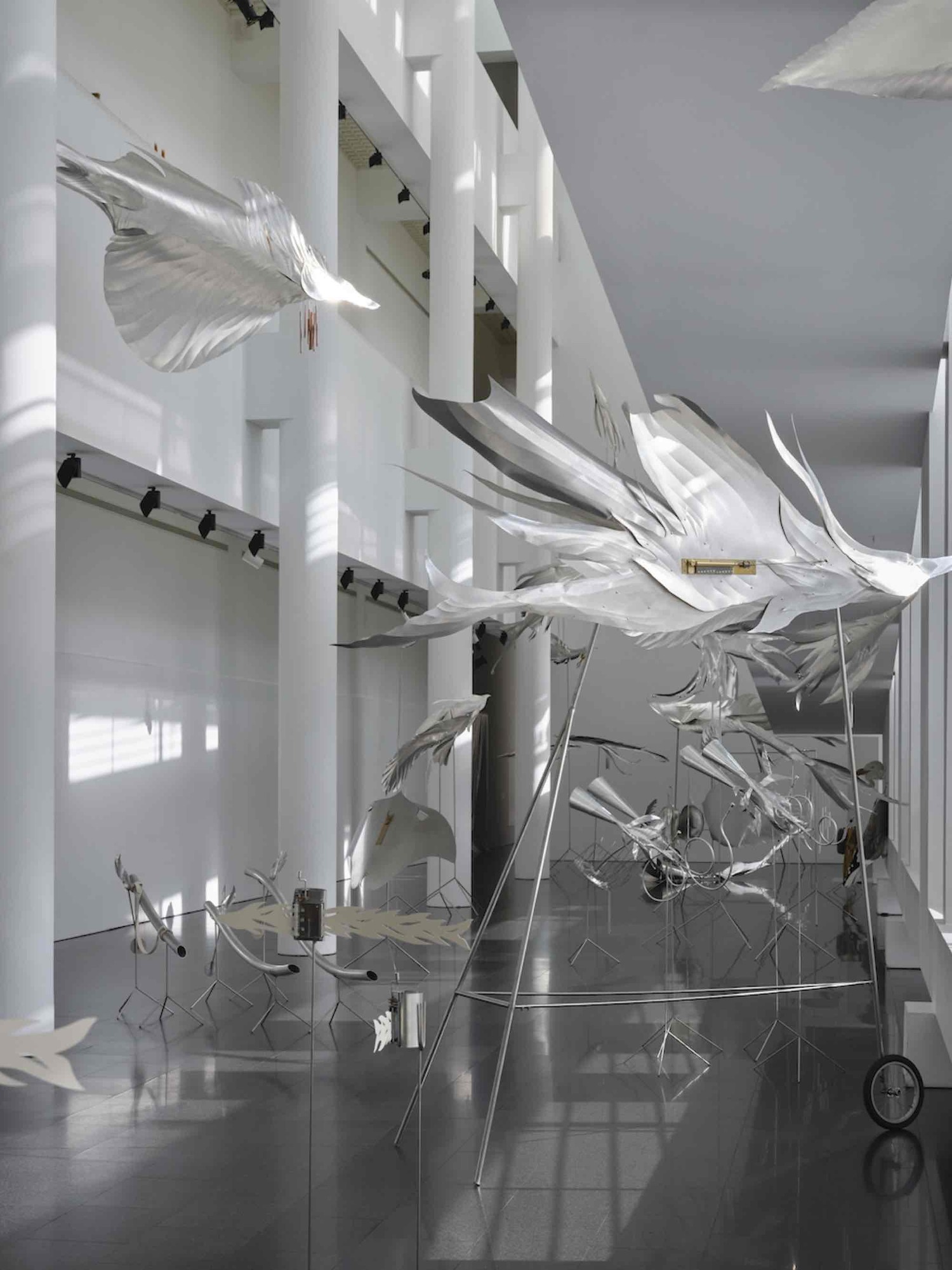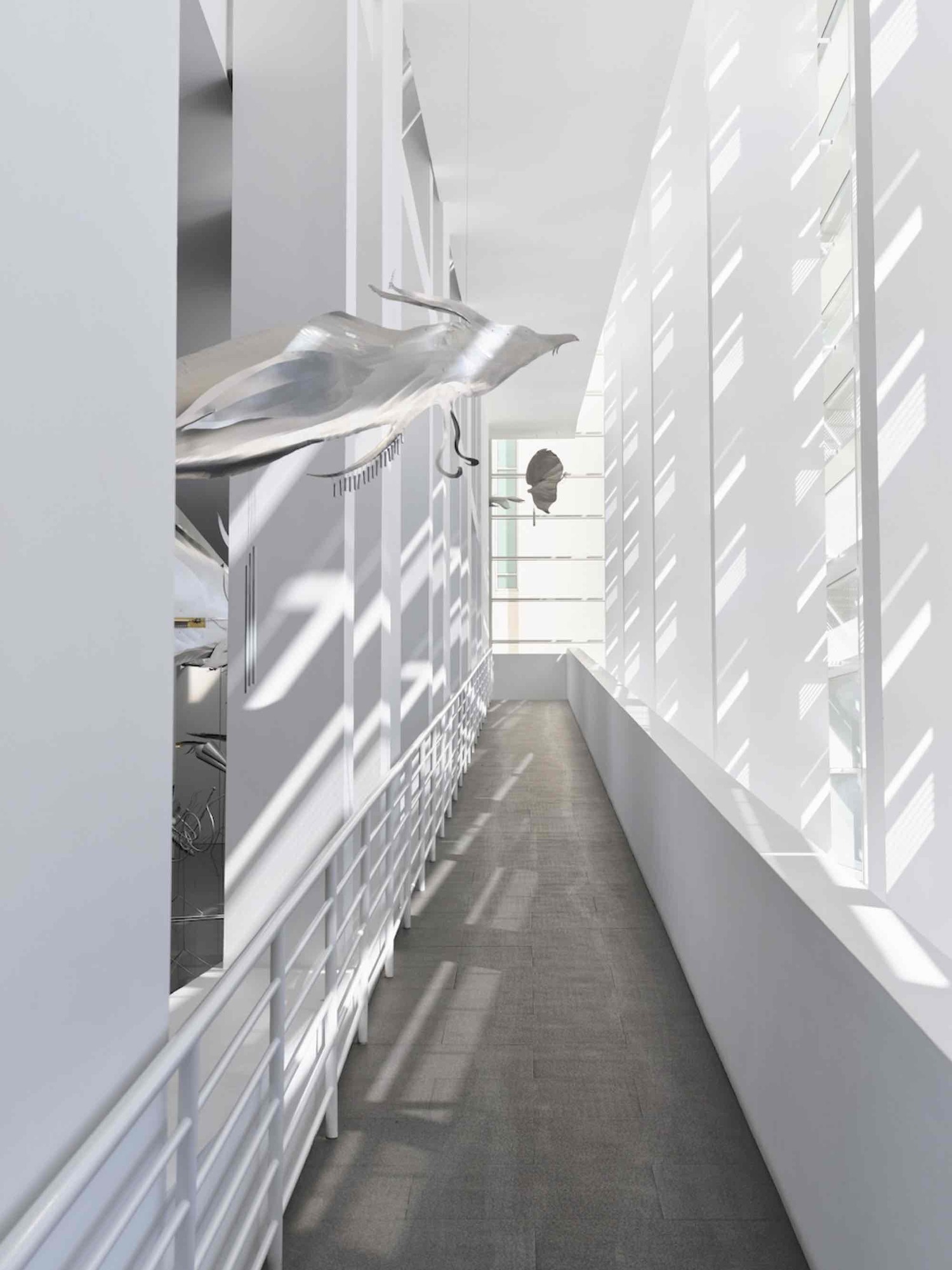Petrit Halilaj & Álvaro Urbano
Lunar Ensemble for Uprising Seas
11 Oct 2024 - 12 Jan 2025

Views from the exhibition "Petrit Halilaj & Álvaro Urbano. Lunar Ensemble for Uprising Seas", 2024. Photo: Dani Pujalte

Views from the exhibition "Petrit Halilaj & Álvaro Urbano. Lunar Ensemble for Uprising Seas", 2024. Photo: Dani Pujalte

Views from the exhibition "Petrit Halilaj & Álvaro Urbano. Lunar Ensemble for Uprising Seas", 2024. Photo: Dani Pujalte

Views from the exhibition "Petrit Halilaj & Álvaro Urbano. Lunar Ensemble for Uprising Seas", 2024. Photo: Dani Pujalte

Views from the exhibition "Petrit Halilaj & Álvaro Urbano. Lunar Ensemble for Uprising Seas", 2024. Photo: Dani Pujalte

Views from the exhibition "Petrit Halilaj & Álvaro Urbano. Lunar Ensemble for Uprising Seas", 2024. Photo: Dani Pujalte

Views from the exhibition "Petrit Halilaj & Álvaro Urbano. Lunar Ensemble for Uprising Seas", 2024. Photo: Dani Pujalte
The MACBA presents the work of Petrit Halilaj & Álvaro Urbano, Lunar Ensemble for Uprising Seas. Inspired by Ay mi pescadito, a popular Spanish song about young fish studying forms of survival and belonging, this immersive work addresses concepts of cohesion and disharmony among species. The installation will be on view as part of a solo presentation of the artists’ work, following its debut at TBA21 Ocean Space in Venice in 2023, and will include new sculptures. The project will be open to the public in the museum's atrium from 11 October - when an open day will be held - until 12 January.
Lunar Ensemble for Uprising Seas (2023) by Berlin-based artists Petrit Halilaj (Kostërrc, Kosovo, 1986) and Álvaro Urbano (Madrid, Spain, 1983) creates an evolving ecosystem comprising over 40 large and small scale sculptures depicting whimsical, hybrid aquatic, terrestrial, and aerial mythical creatures that do not exist in the real world. The works, which will include new sculptures for this presentation, range in scale and offer creative interpretations of future states of evolution, including survival both underwater and in the sky. Above the creatures, a large egg-shaped moon sculpture is suspended from the ceiling and floats above the space, symbolizing the cyclical nature of our world and encouraging visitors to reimagine future forms of life
Set within MACBA’s expansive three-floor atrium, the sculptures’ metallic skins reflect lights and shadows onto the museum’s walls, ceilings, and floors, modifying the perception of the work over the day. Each sculpture doubles as a musical instrument, producing sounds from music boxes and other DIY techniques. When played together, the music boxes and other instruments attempt a “melody” inspired by Ay mi pescadito combined with underwater noises. These sounds do not easily harmonise, mirroring the complexity of creating perfect synchrony among species in the material world. A cast of local and international musicians, dancers and performers has activated the installation with a big performance.
The artists Petrit Halilaj and Álvaro Urbano work together on collaborative fiction projects in which collective memory melds with personal anecdotes and notions of kinship extends beyond the human. Their joint works activate spaces of resilience through the deployment of scenographies of intimacy. A peculiarity that is also visible when they work separately.
Although the artists share a life together in Berlin, they typically maintain separate artistic practices. The presentation in Venice marked the first time the artists were invited as a duo to develop a site-specific work. Both of their practices imbue personal, playful elements that work to ask questions regarding societal norms.
Lunar Ensemble for Uprising Seas (2023) by Berlin-based artists Petrit Halilaj (Kostërrc, Kosovo, 1986) and Álvaro Urbano (Madrid, Spain, 1983) creates an evolving ecosystem comprising over 40 large and small scale sculptures depicting whimsical, hybrid aquatic, terrestrial, and aerial mythical creatures that do not exist in the real world. The works, which will include new sculptures for this presentation, range in scale and offer creative interpretations of future states of evolution, including survival both underwater and in the sky. Above the creatures, a large egg-shaped moon sculpture is suspended from the ceiling and floats above the space, symbolizing the cyclical nature of our world and encouraging visitors to reimagine future forms of life
Set within MACBA’s expansive three-floor atrium, the sculptures’ metallic skins reflect lights and shadows onto the museum’s walls, ceilings, and floors, modifying the perception of the work over the day. Each sculpture doubles as a musical instrument, producing sounds from music boxes and other DIY techniques. When played together, the music boxes and other instruments attempt a “melody” inspired by Ay mi pescadito combined with underwater noises. These sounds do not easily harmonise, mirroring the complexity of creating perfect synchrony among species in the material world. A cast of local and international musicians, dancers and performers has activated the installation with a big performance.
The artists Petrit Halilaj and Álvaro Urbano work together on collaborative fiction projects in which collective memory melds with personal anecdotes and notions of kinship extends beyond the human. Their joint works activate spaces of resilience through the deployment of scenographies of intimacy. A peculiarity that is also visible when they work separately.
Although the artists share a life together in Berlin, they typically maintain separate artistic practices. The presentation in Venice marked the first time the artists were invited as a duo to develop a site-specific work. Both of their practices imbue personal, playful elements that work to ask questions regarding societal norms.
